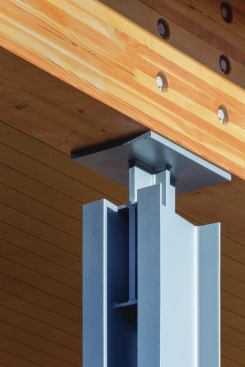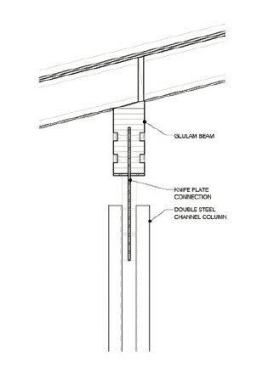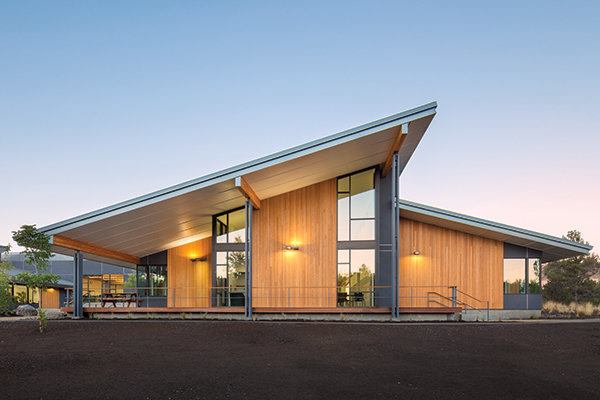Money was tight for the Cascades Academy, in Bend, Ore., which needed a facility to accommodate its growing student population that had been stuck in rented classrooms since the private day school’s founding in 2003. While the forested site overlooking the Deschutes River called for a timber structure, the nonprofit’s budget was more in the realm of fiber-cement cladding or stucco on block.
In 2007, the school’s board of directors hired Portland, Ore.–based Hennebery Eddy Architects to design a master plan for the 21-acre site, but the board pressed the pause button when the economy soured. In 2009, after plans resumed and Hennebery Eddy began design on a 38,500-square-foot facility, talk turned to slashing costs—and expectations. A couple of the school’s board members spoke up, says Hennebery Eddy founding principal and project design leader Tim Eddy, AIA. “They wanted a building that belongs in the region.”
Resolved to avoid the Pacific Northwest’s overused chalet aesthetic, the firm crafted a “more finely detailed piece of contemporary architecture” that reflects the school’s nature-focused mission and met the budget, Eddy says. Wood, glass, and novel steel connection details blur the line between the outdoors and indoors while strategic material and design choices made the project financially feasible.

Josh Partee
The designers wanted to blur the lines between the outdoors and indoors. Double-channel steel columns allow light and views of the landscape to slip through the building structure. Knife plate connections—thin steel plates mortised into wooden beams or anchored in concrete—extend 6 inches above and below the tops and bottoms of the columns, giving the structure an open feel.

Hennebery Eddy Architects
Column head detail

Josh Partee
Hennebery Eddy specified structure-as-finish detailing for columns and beams and used standard platform wood framing (nailed studs) behind painted gypsum wallboard or western hemlock 1x boards.

Hennebery Eddy Architects
Column base detail
